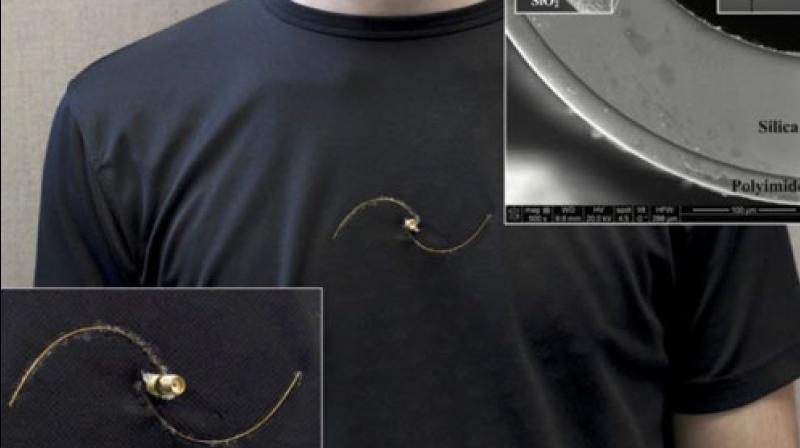This smart T-shirt monitors breathing in real-time

Scientists have created a smart T- shirt that monitors the wearer's respiratory rate in real time, without the help of any wires or sensors.
The innovation paves the way for manufacturing clothing that could be used to diagnose respiratory illnesses or monitor people suffering from asthma, sleep apnea or chronic obstructive pulmonary disease.
The key to the T shirt, created by researchers at Universite Laval in Canada, is an antenna sewn in at chest level that is made of a hollow optical fibre coated with a thin layer of silver on its inner surface.
Unlike other methods of measuring respiratory rate, the new T shirt works without any wires, electrodes, or sensors attached to the user's body.
The fibre's exterior surface is covered in a polymer that protects it against the environment. The antenna does double duty, sensing and transmitting the signals created by respiratory movements.
The data can then be sent to the user's smartphone or a nearby computer.
As the wearer breathes in, the smart fibre senses the increase in both thorax circumference and the volume of air in the lungs, researchers said.
"These changes modify some of the resonant frequency of the antenna. That is why the T shirt does not need to be tight or in direct contact with the wearer's skin," said Younes Messaddeq, professor at Universite Laval.
"The oscillations that occur with each breath are enough for the fibre to sense the user's respiratory rate," said Messaddeq.
"Our tests show that the data captured by the shirt is reliable, whether the user is lying down, sitting, standing, or moving around," he said. To assess the durability of their invention, the researchers washed the T shirt.
"After 20 washes, the antenna had withstood the water and detergent and was still in good working condition," Messaddeq added.
The study was published in the journal Sensors.

